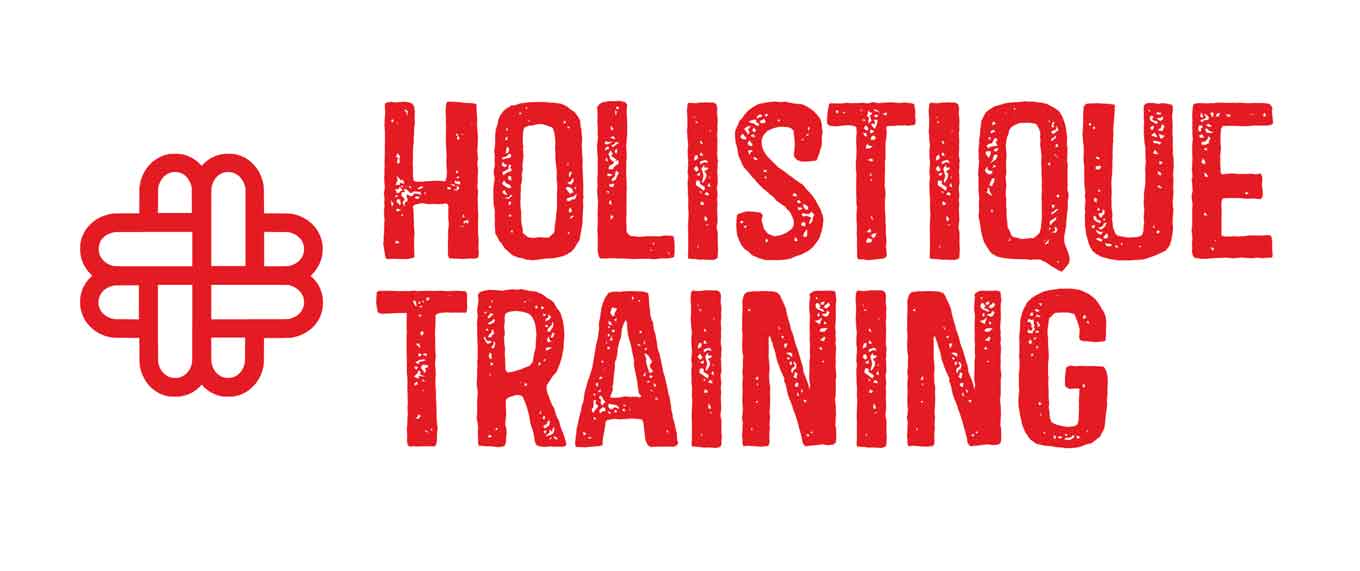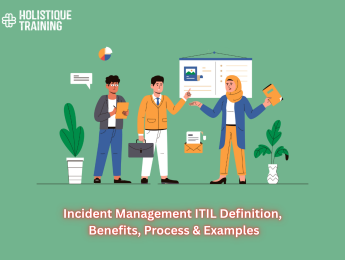- Table of Contents
- 1. Introduction
- 2. What Is Incident Management? ITIL Definition and Core Objectives
- 3. The Role of Incident Management in the ITIL Framework
- 4. Key Benefits of Implementing ITIL Incident Management
- 5. The ITIL Incident Management Process: Step-by-Step
- 1. Incident Identification & Logging
- 2. Incident Categorisation
- 3. Incident Prioritisation
- 4. Initial Diagnosis & Escalation
- 5. Investigation & Resolution
- 6. Incident Closure
- 7. Post-Incident Review (Major Incidents)
- 6. Major Incident Management: Handling High-Impact Events
- 7. Real-World Examples of Incident Management
- Example 1: AWS Cloud Outage (2023)
- Example 2: ERP System Failure in a Manufacturing Firm
- Example 3: Phishing Attack in a Financial Institution
- 8. Best Practices and Tools for Effective Incident Management
- 9. Common Challenges and How to Overcome Them
- 10. Conclusion:
1. Introduction
In an era where businesses depend on uninterrupted digital services, any unexpected disruption can cause significant financial and reputational damage. This is where Incident Management, one of the most essential processes under the ITIL (Information Technology Infrastructure Library) framework, becomes indispensable. ITIL is a globally recognised set of best practices for IT Service Management (ITSM), providing organisations with a structured approach to delivering reliable and value-driven IT services.
An incident , in ITIL terms, is defined as any unplanned interruption to an IT service or a reduction in its quality. This could range from a server crash to a malfunctioning email system or a customer portal that suddenly stops responding. The goal of Incident Management is to restore normal operations as swiftly as possible while minimising business impact and maintaining agreed service levels.
Modern organisations operate in a highly connected ecosystem where even a few minutes of downtime can translate into substantial losses. A 2024 survey by ServiceNow revealed that 78% of users are less likely to trust a brand after experiencing repeated service disruptions. These statistics highlight the growing need for robust, structured Incident Management capabilities.
With the rise of cloud computing, remote collaboration, and round-the-clock service expectations, the complexity of IT environments has multiplied. Managing incidents effectively now demands cross-functional coordination, automation, and data-driven decision-making.
In today’s competitive digital economy, mastering ITIL-based Incident Management is not just an operational necessity — it is a strategic imperative that enhances business continuity, customer trust, and organisational resilience.
2. What Is Incident Management? ITIL Definition and Core Objectives
Under ITIL 4, Incident Management is defined as “the process of minimising the negative impact of incidents by restoring normal service operation as quickly as possible.” It ensures that service quality and availability are maintained at optimal levels, even in the face of unexpected failures.
While the concept may appear straightforward, it is crucial to differentiate it from other ITSM processes. Many organisations confuse incidents with problems or service requests — yet each serves a unique purpose within ITIL.
Type | Definition | Objective | Example |
Incident | Unplanned interruption or degradation in IT service. | Restore normal service quickly. | Email server outage. |
Problem | Underlying cause of one or more incidents. | Identify and remove root causes. | Faulty network switch causing recurring outages. |
Service Request | Formal request from a user for information or access. | Fulfil standard user requests. | Password reset or new account creation. |
The primary goal of Incident Management is to restore normal service operations as quickly as possible to minimise the impact on business activities. This process involves several core objectives:
- Quick Detection and Logging — Every incident should be identified, recorded, and classified promptly, ensuring visibility and accountability.
- Effective Prioritisation and Escalation — Incidents are prioritised based on their urgency and business impact, allowing IT teams to focus on what matters most.
- Efficient Resolution and Closure — Timely intervention and thorough resolution prevent recurrence and ensure user satisfaction.
- Continuous Improvement — Post-incident reviews and trend analysis help improve processes, tools, and training over time.
Striking the right balance between speed and quality is essential. Rapid response without root cause understanding can lead to recurring issues, whereas over-analysis can delay recovery. A mature ITIL-based Incident Management process integrates automation, knowledge databases, and cross-team collaboration to ensure that services are restored efficiently without compromising reliability.
In essence, Incident Management transforms chaos into control — ensuring every disruption becomes a learning opportunity and a step towards operational excellence.
3. The Role of Incident Management in the ITIL Framework
Incident Management is a central element of the ITIL Service Value System, particularly under the “Deliver and Support” stage of the Service Value Chain. Its purpose is to ensure that services are continuously available and aligned with business needs.
This process does not function in isolation; it is deeply interconnected with other ITIL practices:
- Problem Management: While Incident Management focuses on quick restoration, Problem Management identifies and eliminates the root causes of recurring incidents. Together, they create a continuous improvement loop.
- Change Control: When incidents arise from known system changes, coordination between Incident Management and Change Control ensures that updates are rolled back or modified safely.
- Service Desk Operations: The Service Desk acts as thesingle point of contact between users and IT. It handles logging, communication, and initial troubleshooting — forming the backbone of effective Incident Management.
- Knowledge Management: Having a centralised knowledge base accelerates diagnosis and resolution by enabling teams to access known errors and past solutions instantly.
The evolution from ITIL v3 to ITIL 4 marks a shift from rigid, process-based structures to collaborative, value-oriented systems. ITIL 4 emphasises co-creation of value between IT and business functions, integrating concepts like Agile, DevOps, and Lean. In this context, Incident Management is no longer just about “fixing” — it’s about optimising service value flow and ensuring that recovery contributes to long-term improvement.
To support these goals, organisations increasingly rely on IT Service Management (ITSM) tools such as ServiceNow, BMC Helix, Jira Service Management, and Freshservice. These platforms automate ticket routing, prioritisation, and reporting, ensuring real-time visibility and efficient collaboration across departments.
Ultimately, Incident Management under the ITIL framework plays a pivotal role in maintaining operational stability while aligning IT outcomes with strategic business objectives.
4. Key Benefits of Implementing ITIL Incident Management
Implementing ITIL-aligned Incident Management offers both immediate and long-term advantages that directly contribute to organisational resilience and customer confidence.
- Reduced Downtime: Structured procedures enable faster detection and resolution, minimising disruption and financial loss.
- Improved Customer Satisfaction: Transparent communication and predictable service recovery enhance trust.
- Enhanced Productivity: Standardised workflows eliminate confusion and duplication of effort.
- Better Communication: Defined roles and escalation paths improve internal coordination.
- Data-Driven Insights: Performance analytics and trend reports help anticipate future incidents.
- Regulatory Compliance: ITIL-aligned documentation and monitoring support adherence to SLAs, GDPR, and other governance frameworks.
Metric | Before ITIL Implementation | After ITIL Implementation |
Mean Time to Resolve (MTTR) | 8 hours | 2 hours |
First Contact Resolution (FCR) | 40% | 75% |
Customer Satisfaction (CSAT) | 65% | 90% |
SLA Breaches | Frequent | Rare |
Business Downtime per Month | 10 hours | 2 hours |
These measurable improvements reflect the strategic value of ITIL Incident Management in transforming reactive IT environments into proactive, service-oriented operations. By standardising incident workflows and leveraging technology, businesses reduce firefighting and focus on innovation.
Furthermore, by linking incident data with business intelligence, organisations can identify recurring patterns, predict failures, and allocate resources more effectively.
As Axelos (the official body behind ITIL) notes, consistent application of ITIL practices leads to a 30–50% reduction in downtime and a 40% improvement in service delivery efficiency.
5. The ITIL Incident Management Process: Step-by-Step
The Incident Management lifecycle follows a structured, repeatable sequence designed to ensure control, visibility, and efficiency at every stage.
1. Incident Identification & Logging
Incidents may be detected through automated monitoring tools, user reports, or helpdesk tickets. Each incident is logged with essential information — such as the reporter’s details, symptoms, time of occurrence, and affected services — creating a traceable record.
2. Incident Categorisation
Categorisation simplifies routing and trend analysis. Categories might include hardware, network, software, or access issues. This enables better allocation of resources and accurate performance reporting.
3. Incident Prioritisation
Prioritisation balancesimpact (scope and severity) andurgency (time sensitivity). The priority matrix below illustrates typical classifications:
Impact / Urgency | Low Urgency | Medium Urgency | High Urgency |
Low Impact | P4 – Minor | P3 – Moderate | P2 – Significant |
High Impact | P3 – Moderate | P2 – Major | P1 – Critical |
Critical (P1) incidents may involvesystem-wide outages, requiring immediate attention and escalation to senior teams.
4. Initial Diagnosis & Escalation
First-line support performs basic troubleshooting. If unresolved, the issue is functionally escalated to specialised technical teams or hierarchically escalated to management when decision-making authority is required.
5. Investigation & Resolution
At this stage, teams employ diagnostic tools, error logs, and Known Error Databases (KEDB) to determine the root cause. Collaboration is essential — especially for cross-platform issues. Modern ITSM tools use AI-based suggestions to accelerate resolution and identify patterns.
6. Incident Closure
Once the service is restored, support staff verify the resolution with the user, ensuring satisfaction and completeness. The incident record is then formally closed, with details documented for knowledge reuse.
7. Post-Incident Review (Major Incidents)
For high-impact events, a structured review identifies what worked, what failed, and how to prevent recurrence. This continuous improvement cycle strengthens organisational readiness and knowledge maturity.
By adhering to this systematic approach, organisations achieve consistency, accountability, and measurable performance improvement across all service teams.
6. Major Incident Management: Handling High-Impact Events
A major incident refers to an event causing significant disruption across multiple systems or users — for example, a national payment gateway outage or a widespread cybersecurity attack. These incidents require immediate, coordinated action beyond standard protocols.
The Major Incident Manager oversees the response, ensuring that all stakeholders — from technical teams to executives — remain aligned. Rapid communication is critical; updates are shared through internal dashboards, status pages, or customer notifications to maintain transparency.
Best practices for managing major incidents include:
- Establishing a dedicated “War Room” for cross-functional collaboration.
- Using clear escalation matrices to avoid delays.
- Conducting real-time impact assessments to guide business decisions.
- Maintaining continuous communication with customers and partners.
Major incidents also bridge into Business Continuity and Disaster Recovery planning. Lessons learned from each event feed into long-term resilience strategies, ensuring the organisation emerges stronger and better prepared for future crises.
7. Real-World Examples of Incident Management
Example 1: AWS Cloud Outage (2023)
In December 2023, an AWS data centre outage affected thousands of businesses globally. Incident detection occurred via automated monitoring alerts, triggering immediate escalation to major incident protocols. AWS issued hourly public updates and restored services within five hours. Post-incident reviews highlighted network misconfiguration and led to improved redundancy strategies.
Example 2: ERP System Failure in a Manufacturing Firm
A large enterprise experienced a total ERP login failure due to a faulty authentication update. The service desk logged the incident, categorised it as high impact , and escalated it to infrastructure teams. Restoration involved rolling back recent patches and updating documentation. The review revealed a need for tighter change-control coordination.
Example 3: Phishing Attack in a Financial Institution
Following a mass phishing campaign, IT and cybersecurity teams collaborated under a unified incident workflow. Rapid containment prevented data breaches, while communication templates ensured consistent updates to staff and customers. The event underscored the importance of training, automation, and cross-departmental coordination.
Each case illustrates how ITIL-aligned Incident Management transforms chaos into clarity — turning high-risk disruptions into structured learning experiences that fortify operational resilience.
8. Best Practices and Tools for Effective Incident Management
To achieve excellence in Incident Management, organisations should adopt a set of proven best practices supported by modern ITSM tools:
- Single Point of Contact (SPOC): Centralise all incident reporting through the Service Desk for streamlined communication.
- Automation and AI: Automate repetitive tasks like ticket categorisation and prioritisation to reduce human error.
- Knowledge Base: Maintain a dynamic repository of solutions and known errors for faster resolution.
- Real-Time Dashboards: Track KPIs such as Mean Time to Resolve (MTTR), Mean Time to Detect (MTTD), and First Contact Resolution (FCR).
- Regular Training and Simulations: Equip teams with scenario-based exercises to handle critical incidents confidently.
Top Tools : ServiceNow , Jira Service Management , SolarWinds , Freshservice , Zendesk, and BMC Helix.
Key Performance Indicators (KPIs):
- MTTR (Mean Time to Resolve): Average time to restore service.
- FCR (First Contact Resolution): Percentage of incidents resolved at first point of contact.
- Incident Volume: Number of incidents over a specific period.
- SLA Compliance Rate: Percentage of incidents resolved within agreed timelines.
- Customer Satisfaction (CSAT): Direct feedback from users post-resolution.
By consistently measuring these indicators, IT leaders can identify bottlenecks, justify investments, and drive continuous service improvement.
9. Common Challenges and How to Overcome Them
Despite robust frameworks, organisations often encounter challenges when implementing ITIL-based Incident Management:
- Poor Categorisation and Prioritisation: Leads to inefficient resource allocation. Solution — use standardised templates and AI-assisted classification.
- Communication Breakdowns: Fragmented updates frustrate users. Solution — implement transparent dashboards and automated notifications.
- Lack of Skilled Resources: Overburdened teams can delay resolution. Solution — invest in continuous professional development and certification.
- Data Silos: Disconnected systems hinder visibility. Solution — integrate ITSM tools with monitoring and analytics platforms.
- Overreliance on Manual Processes: Human dependency slows response. Solution — gradually introduce automation and orchestration.
By addressing these challenges proactively, businesses cultivate a responsive, learning-oriented IT culture that aligns with ITIL’s principle of continual improvement.
10. Conclusion:
In an age defined by digital dependency, ITIL Incident Management serves as the cornerstone of operational resilience. It ensures that service disruptions are contained swiftly, transparently, and efficiently — safeguarding business continuity and customer trust.
The benefits extend beyond quick recovery; they include data-driven insights, stronger collaboration, and a proactive culture of improvement. When embedded effectively, Incident Management transforms IT from a reactive support function into a strategic enabler of business success.
For organisations aiming to enhance their ITSM maturity and align with global best practices, investing in structured training is essential.
To build your professional expertise, explore Holistique Training’s Practical IT Service Management with ITIL 4 — a comprehensive programme designed to help IT professionals apply ITIL principles in real-world environments, manage incidents confidently, and drive measurable service excellence.
























